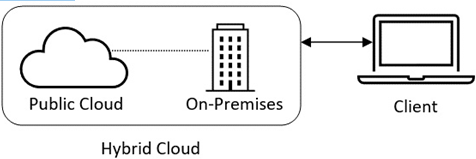Navigating complex hybrid deployments for IoT – Architecting Complex, Holistic IoT Environments
By Patrice Duren / October 26, 2022 / No Comments / AWS Certification Exam, Case study of Amazon, IoT sustainability
IoT deployments are complex, and hybrid deployments add an additional layer of complexity. Hybrid deployments are those that use both on-premises infrastructure and cloud services. The reason for using a hybrid approach is that it allows organizations to leverage their existing infrastructure while also taking advantage of the scalability and flexibility of the cloud.
However, managing hybrid IoT deployments comes with its own set of challenges. The primary challenge is managing the complexity of the system. In a hybrid environment, data must flow between the on-premises infrastructure and the cloud seamlessly. This requires a high degree of integration between the different components of the system. Additionally, organizations must manage the security of the system and ensure that data is always protected.
To navigate these challenges, organizations should take a holistic approach to managing their hybrid IoT deployments. This includes having a clear understanding of the system architecture and how data flows between the different components. Organizations should also prioritize security and implement measures such as encryption and access controls to protect data.
The following figure shows a high-level representation of a connection diagram of a hybrid cloud deployment:

Figure 14.1 – A connection diagram of a hybrid cloud deployment
The public cloud and on-premises will have their own security and architectural components to consider while the client communicates with that network. The public cloud and on-premises will be able to communicate with each other through an encrypted network.
Now, we can take a look at a new platform we can add as part of our hybrid deployment: Microsoft Azure.
Introduction to Microsoft Azure
Microsoft Azure, developed by Microsoft, is an extensive cloud computing platform that enables creating, testing, deploying, and managing applications and services within Microsoft-controlled data centers. This platform offers a variety of cloud-based services such as computing, analytics, storage, and networking. Users have the flexibility to select from these offerings to build and expand new applications or migrate existing ones to the public cloud. Azure is compatible with a wide range of programming languages, tools, and frameworks, including Microsoft’s products and those from other vendors.
Regarding Internet of Things (IoT) applications, Azure provides a comprehensive IoT suite that aids in gathering, monitoring, and analyzing data from IoT devices. This scalable Azure IoT platform supports a broad spectrum of devices and delivers immediate insights, which is crucial for enhancing operational efficiency, improving decision-making processes, and discovering new commercial opportunities. Employing Azure in conjunction with other cloud services such as AWS allows companies to diversify their cloud solutions, reducing reliance on a single provider and taking advantage of distinct services offered by different clouds. This strategy results in more robust and adaptable architectures, allowing workload distribution to the most suitable cloud service based on performance or cost. For IoT systems, this approach means broader global reach and advanced analytics capabilities, all while leveraging the strengths of various cloud environments.
Now, let’s look at how we can start architecting for a hybrid deployment.